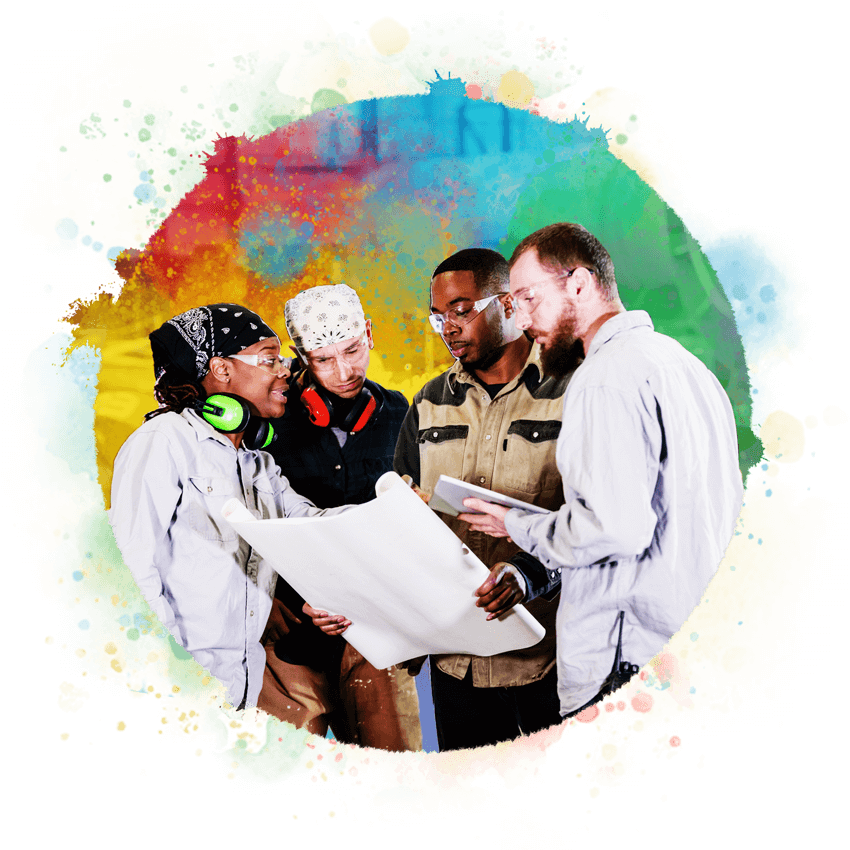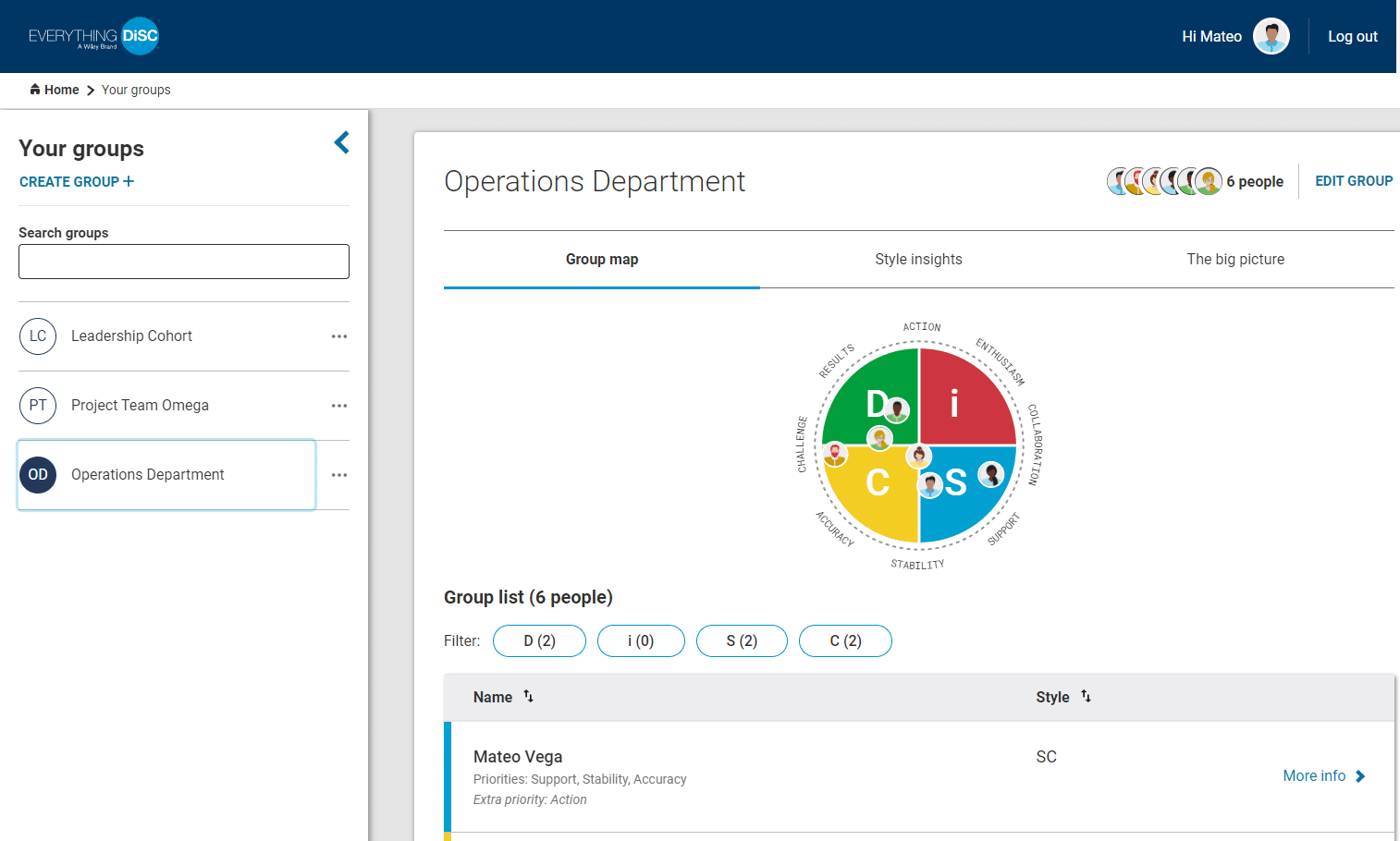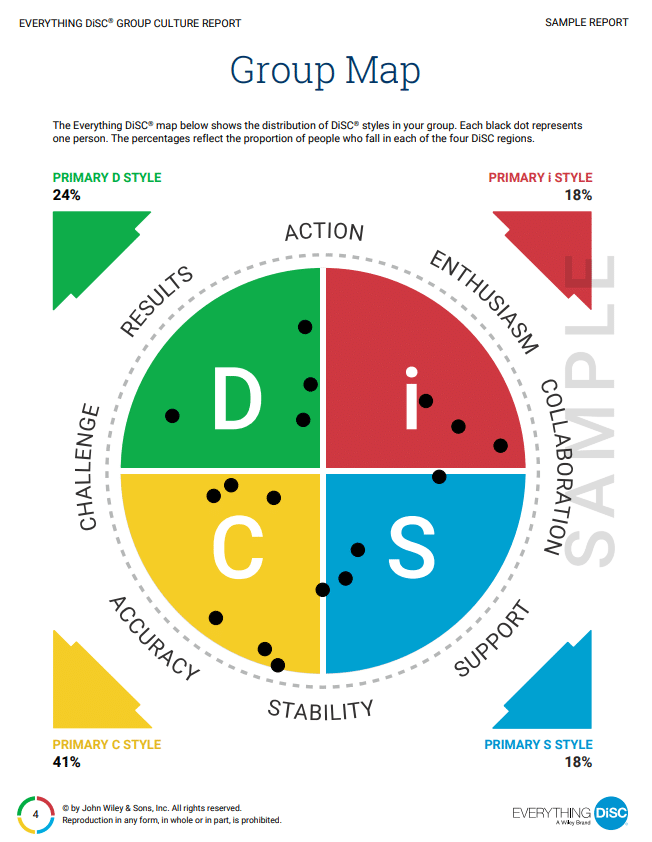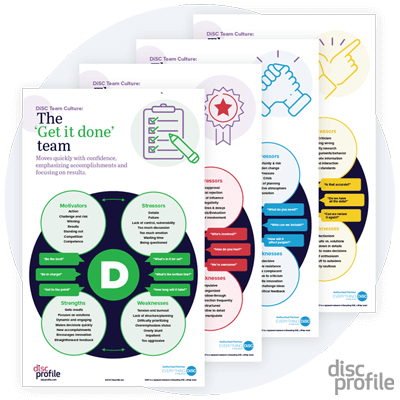
DiSC® group cultures
In many organizations, it’s obvious that the accounting and marketing departments each have their own distinct culture. Groups and teams always have their own ways of doing things, and sometimes that makes a big difference in how they perform and how they interact with other groups. If you have two units or departments that frequently interact, sharing the groups’ DiSC® cultures with both can help them communicate with each other and function better.
If you work with many teams, you’ve likely learned that what works with one team does not necessarily work with another. With one, it may be important that you all get together for drinks every so often, but with another, it may be important that you have detailed plans for every idea you’re suggesting. Some teams want to try just about any new idea you could come up with, and others have to be gently coaxed to make the slightest changes. You can save yourself much frustration if you have more insight into the culture of the teams you work with.
Read more to learn characteristics of the D, i, S, and C group cultures.
Group culture reports
Group culture is about more than the personalities of its members. The larger culture can greatly influence such things as individualism versus collectivism or when celebrations are held, or what’s considered appropriate dress. The workplace location, industry, size, and history will also influence team and group cultures within. Nevertheless, the personality of a team leader and each team member do make up part of a group’s culture.
Looking at a report such as the Everything DiSC® Group Map can elicit interesting insights and conversations. Someone might suddenly understand why they haven’t felt like they fit in with the team. The team might want to discuss how to watch for some possible drawbacks of their culture. Someone might recognize how their new leader’s style and subsequent changing of the team’s culture initially caused stress and confusion. The team leader might determine that they need to stretch more often into a style that’s missing in the group.
Everything DiSC on Catalyst offers this insight:
When you have a lot of people with similar tendencies, they may set group expectations. That could be a source of strength. Or it might mean the group overlooks different approaches. And a group with two heavily represented styles may sometimes end up with competing priorities.
Groups with a mix of styles may benefit from complementary strengths. That’s especially true when people stay open to differing perspectives. Otherwise, group members may sometimes pull in different directions, with like-minded people sticking together and reinforcing blind spots.
Some groups have a few people whose style differs from most everyone else. Sometimes they bring a fresh perspective to the group. Other times they may feel like their priorities aren’t valued. When you’re the odd one out, it’s easy to worry your way of doing things isn’t just different, but wrong.
If you have run individual profiles using the EPIC DiSC administration system, you can create a group report. If teams change, you can run a new report to see if the culture of the group is likely to change with the introduction of new members.
Team posters
Consider using these posters with your teams. Print out the poster for their own team and let them place it where others who work with them can see it. It’s a great way for them to open a conversation about how they like to work as a team and what they value. It’s also helpful for the team to see where they might struggle or exclude members who do not match the group’s style. When a new member is being onboarded, the team’s poster can be a great way to introduce the team’s way of doing things.
Put posters of all four styles in a break or conference room to stimulate conversation about personality styles and needs.
- D: The “get it done” team [PDF]
- i: The “get recognition” team [PDF]
- S: The “get along” team [PDF]
- C: The “get it right” team [PDF]
Groups on Catalyst
If your group is using the Everything DiSC on Catalyst platform, you’ll be able to create your own group reports. Use these to discuss questions such as:
- How does the group listen to those in the other regions?
- How do people who aren’t in the predominant style region feel about this culture? What are their frustrations and challenges?
- How does your group interact with other groups your team works with? Do you need to adapt your style?

Adaptive team cultures
Teams aren’t constrained by their group’s culture. Individuals can adapt their styles when communicating and interacting. Teams can make conscious choices to capitalize on their strengths and address their challenges.
If your team is heavily weighted with one DiSC style, it might lean too heavily on the traits of that style and have trouble meeting its objectives. People can, of course, behave in ways that take a bit more effort. So a few people on a predominately C-style team might choose to act as more of a cheerleader for their group. Or, a predominately S-style team might add a few structures to ensure that they maintain a focus on timelines and end results.
Leaders can make note of their teams’ differing styles. They can select ways of motivating or rewarding each team based on their styles. They can possibly gain insight into conflict between two of their teams. Team leaders can be sure to attend to the views of any members who have styles that differ from the group as a whole.


